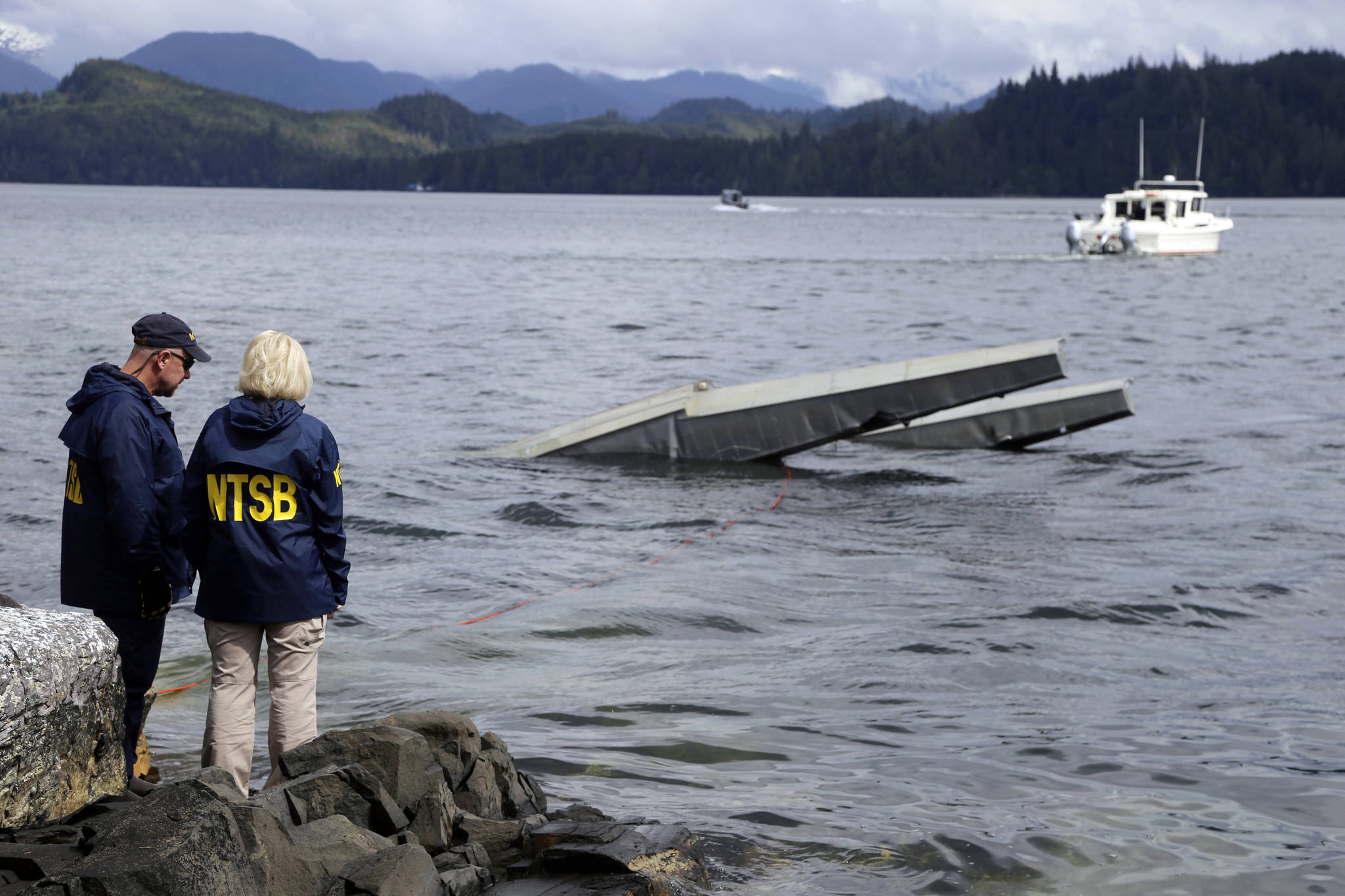By BECKY BOHRER and TOM KRISHER
Associated Press
JUNEAU — Obstructed views of the sky and problems with a system that alerts pilots to nearby planes were factors in a mid-air crash of Alaska sightseeing planes that killed six people two years ago, the National Transportation Safety Board has determined.
The board on Tuesday approved the probable cause unanimously, determining that the planes’ structures, or a passenger, limited the pilots’ views before the crash. That prevented the pilots from seeing each other in the critical moments before the May 2019 crash.
The board also cited a lack of alerts from the planes’ display systems while they were flying in a high-traffic area.
Mountain Air Service pilot Randy Sullivan and his four passengers, and a passenger in a plane owned by Taquan Air were killed. Ten people were injured when the aircraft converged at 3,350 feet.
The Ketchikan-based floatplanes were carrying passengers from the same cruise ship, the Royal Princess, and were returning from tours of Misty Fjords National Monument at the time of the crash. Mountain Air’s single-engine de Havilland DHC-2 MK 1 Beaver and Taquan’s larger de Havilland DHC-3 Otter collided just after noon over the west side of George Inlet.
NTSB Vice Chairman Bruce Landsberg said the “see and avoid” system that pilots rely on to avoid mid-air crashes doesn’t work well in high-traffic areas where the sight-seeing planes were traveling.
Chairman Robert Sumwalt said the pilots didn’t see each other in time to avoid a collision. Contributing factors included “preoccupation with matters unrelated to duties such as attempting to provide passengers with a scenic view and physiological limits on the human vision, reducing the time opportunity to see-and-avoid other aircraft,” he said.
Staff members told the board the Otter pilot recalled seeing a white and red flash, then a tremendous collision.
The Beaver pilot’s view would have been obstructed by the airplane’s structure and a passenger seated to his right during the critical moments before the crash. The Otter pilot’s view was obscured by a window post, the NTSB staff said.
William Bramble, the NTSB’s human performance specialist, told the board that both planes were equipped with systems that track other planes, but visual and audible alerts weren’t working in either plane.
“The Otter pilot seemed to miss seeing the target (the other plane) on the display because he last recalled looking at the display about four minutes before the collision,” Bramble said.
Contributing to the crash were the Federal Aviation Administration allowing new transceivers that lacked alert capability and the lack of a requirement for air-traffic-advisory systems to have audio alerts on planes flown by companies that carry passengers, according to the probable-cause finding.
Board members also recommended Tuesday that the FAA require planes that operate in high-traffic tour areas broadcast their locations to other aircraft.
Documents released earlier by the NTSB show the propeller of the Taquan Otter hit the other aircraft, leaving deep cuts later documented by investigators. The tail of the Mountain Air plane hit the left side of the Taquan aircraft, popping open a door.
The leg of a passenger sitting near the door was sucked outside the plane as other passengers held him in place, witnesses said.
Otter pilot Lou Beck estimated his plane took five seconds to hit the water 10 miles northeast of Ketchikan.
At least three people could be heard saying, “brace brace brace,” on a camera recording audio before the Taquan plane hit the water.
The Mountain Air Beaver plane broke up in flight, scattering debris across 3,000 feet.
Mountain Air Service closed after the accident.

